The original cooling of the GeForce GTX 1080 Ti during the Bechmarks and analyses for our last week's launch article Nvidia GeForce GTX 1080 Ti 11GB really didn't blow us off. Yes, she does what she is supposed to do in the end – but just loud and a little unmotivated. But why should you unnecessarily give away the potential of this card and at the same time endure a hot air fön?
We actually wanted to publish overclocking results for the launch, but we simply couldn't convince ourselves of the performance of the cooling solutions available. Neither third-party cooling solutions nor any hybrids were capable of truly satisfying our hunger for border experiences. Much tested and just as much discarded – in the end we were like King Ludwig: All that remained was the walk into the deep water.

Ergo we simply got a real solid copper block for the Titan X (Pascal) in the short term before it sold out again, and mounted it on our test sample. Half things are not things and so it had to be a real water cooling. Wasn't anyone talking about a 2 GHz and more card? Since sometimes the PR takes the mouth quite full, we took the card in our hands, because we wanted to know exactly what is really possible without soldering irons and hard-mod.
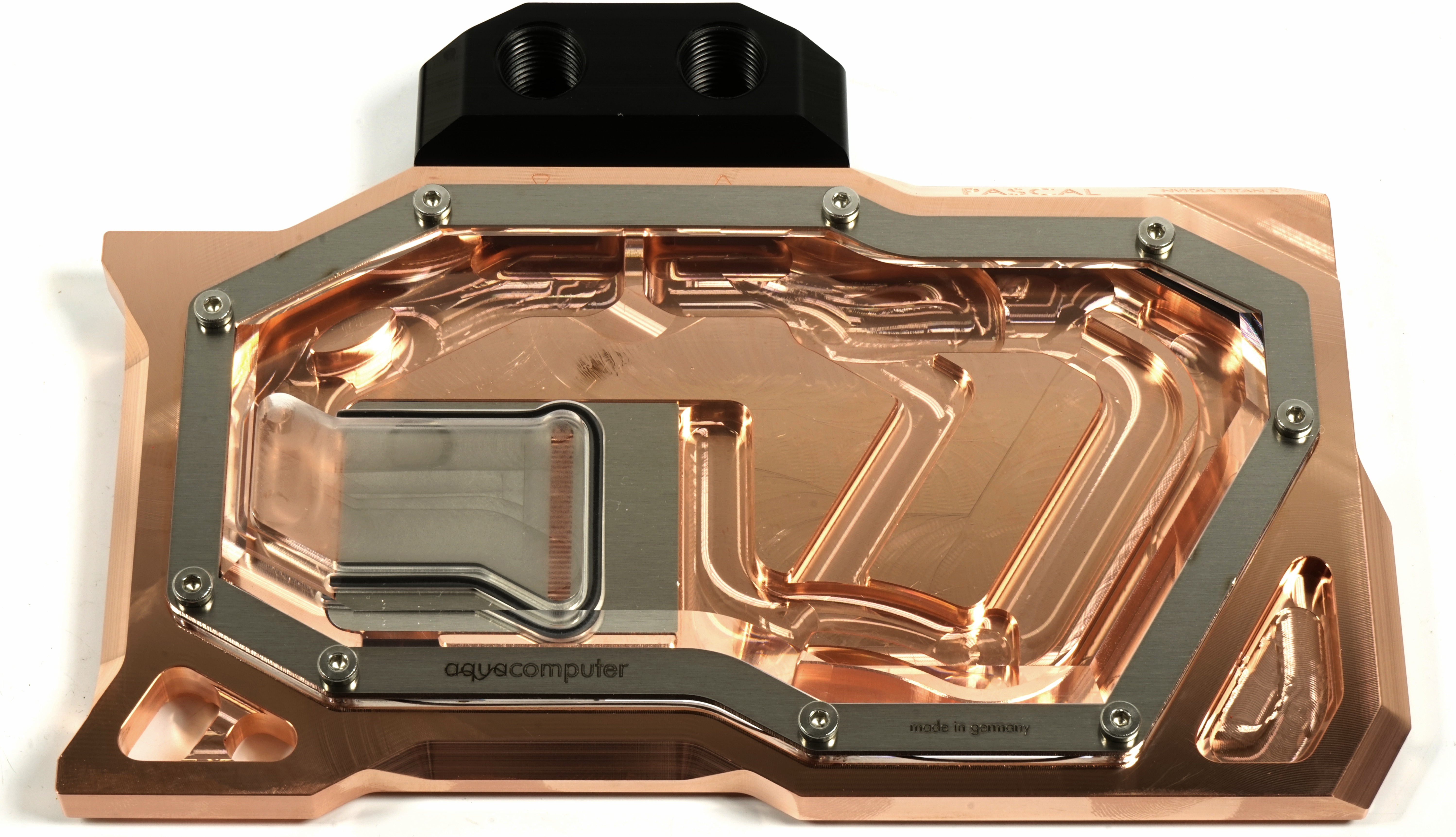 |
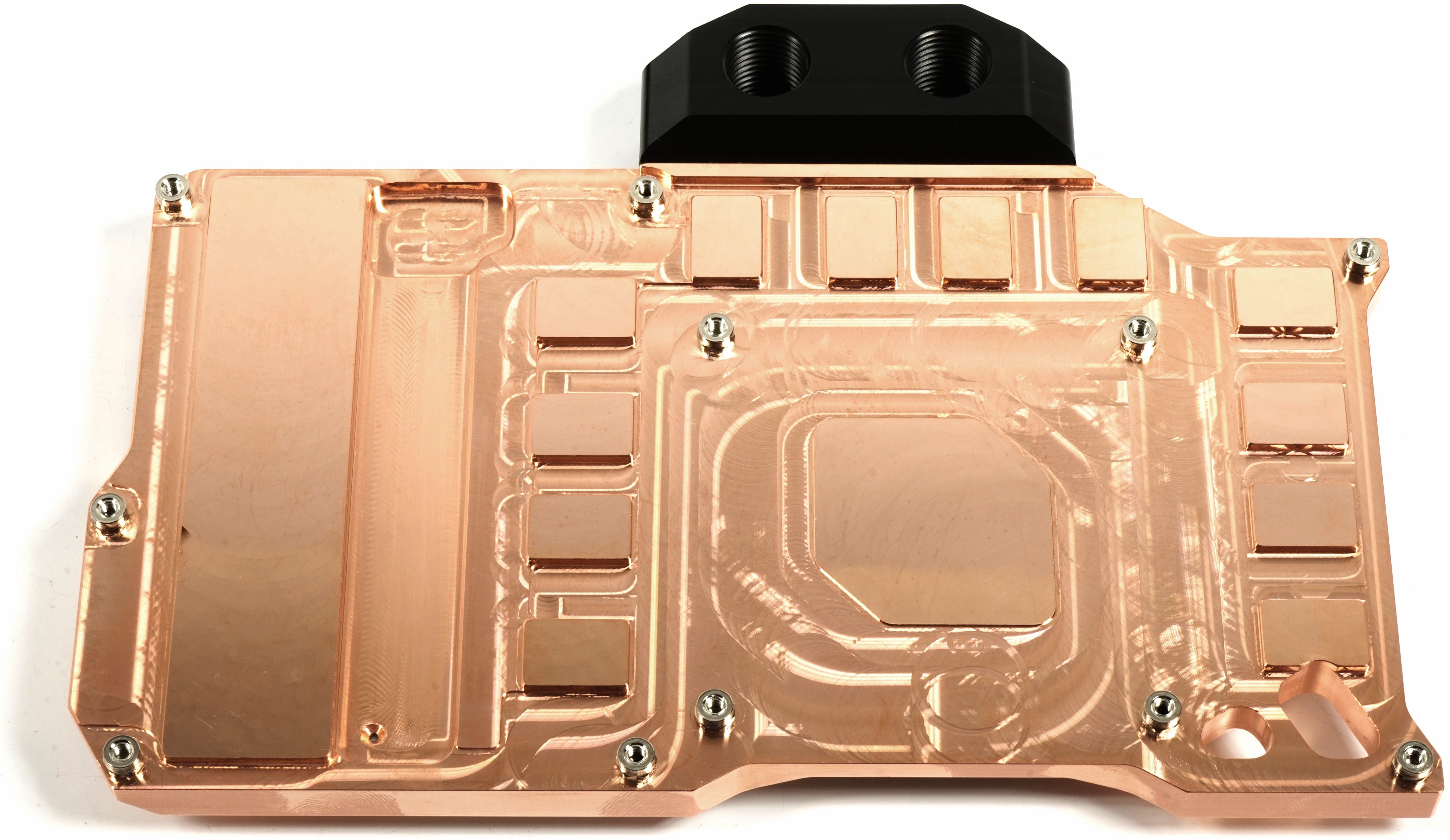 |
The aquacomputer kryographics Pascal- NVIDIA TITAN X (the name is longer than our patience with the original cooler) is fully compatible with the GeForce GTX 1080 Ti, considering a small detail that we'll go into in more detail. Since the Titan X Pascal and the GeForce GTX 1080 Ti use the same PCBA (only with slightly different configuration), the use of the water cooler is completely stress-free and problem-free.
The surveys for the memory modules are coated with thermal paste, except for the twelfth missing in comparison to the Titan X (Pascal), which must be provided by yourself. We use the proven cryonaut from Thermal Grizzly, which passes well due to its rather liquid consistency and can later also be distributed further by the contact pressure. The same applies to the blob on the GPU.
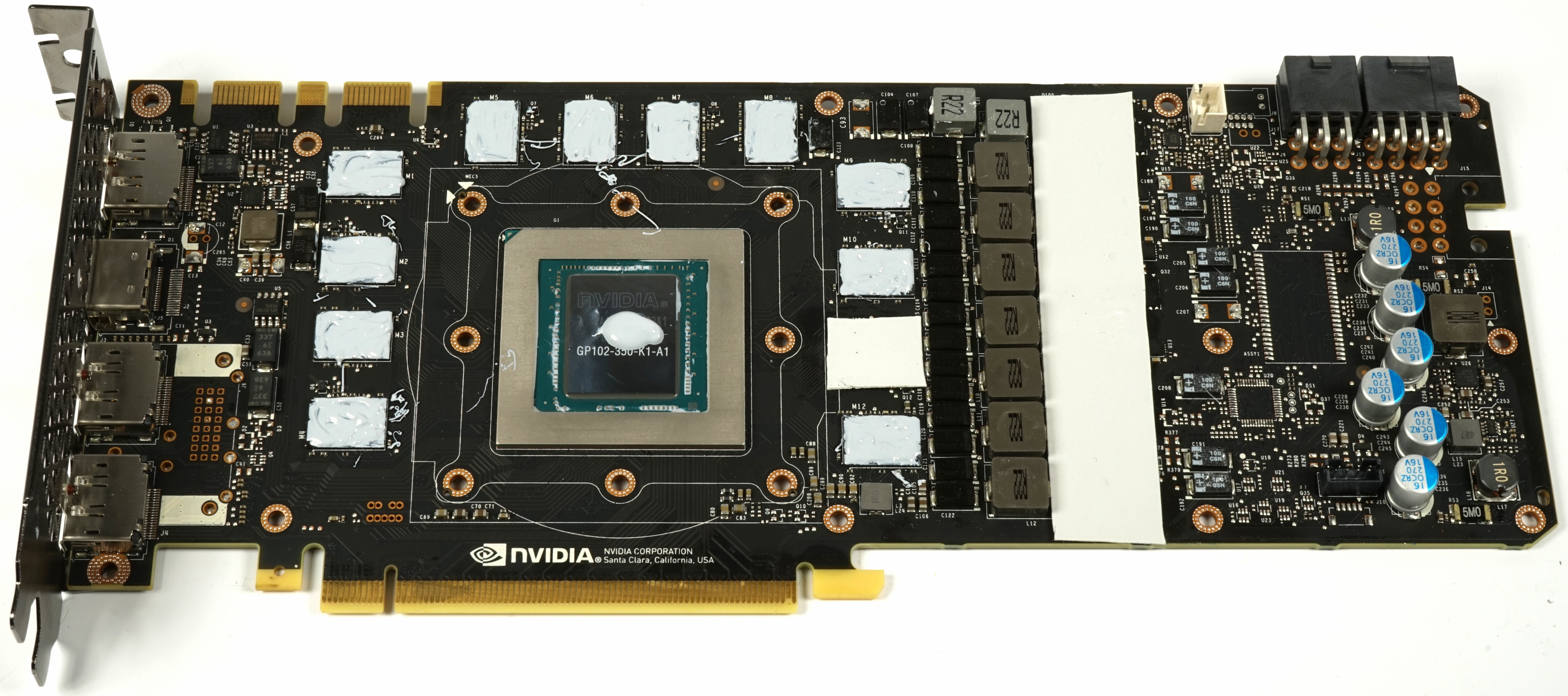
The scope of delivery also includes a thin thermal guide pad, which covers almost the entire range of the voltage converters. Since it is a little longer, we shorten it so that the rest can be used to insulate the board and soldering eyes exactly where the one memory module was saved (see picture above). The actual conversion including dismantling of the old cooler (attention, remove all screws!) can be done completely with a little practice in under 30 minutes.
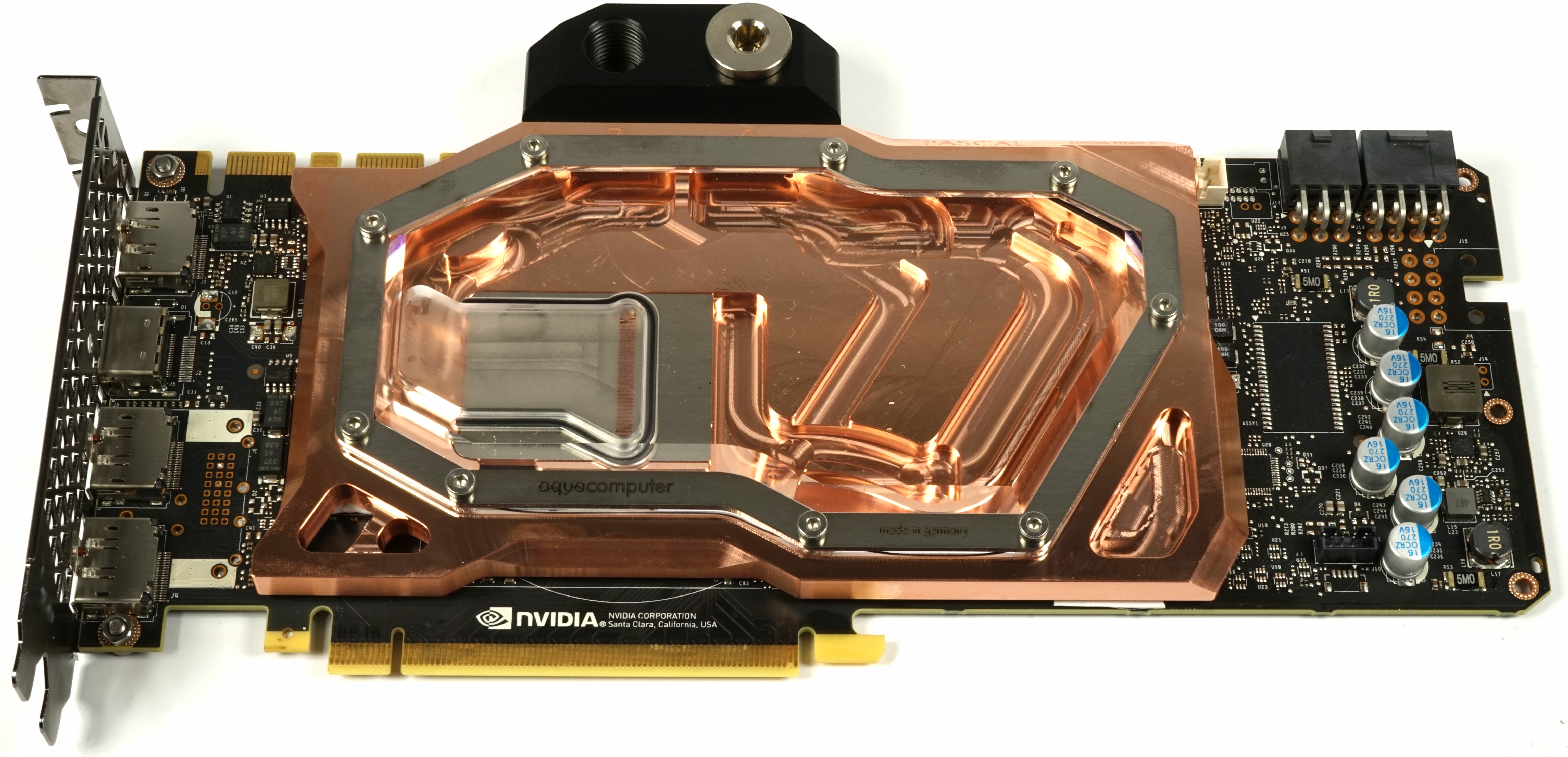 |
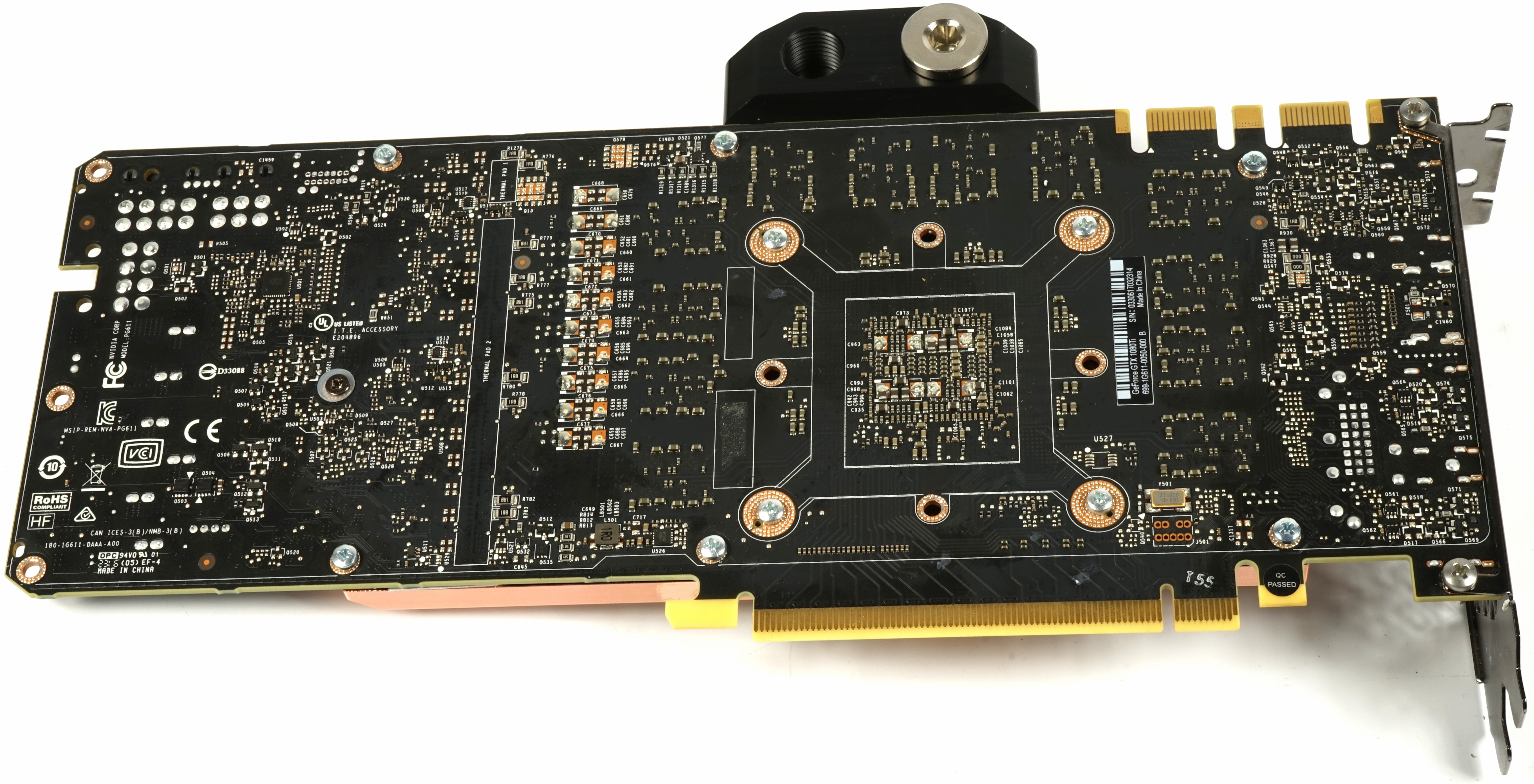 |
We now simply connect the graphics card to our new benchtable with two quick-release fasteners, after we have quickly prefilled the card and hoses. How the new measuring station works can be found in the basic article So test graphics cards, as of February 2017, of course, you can read in detail.
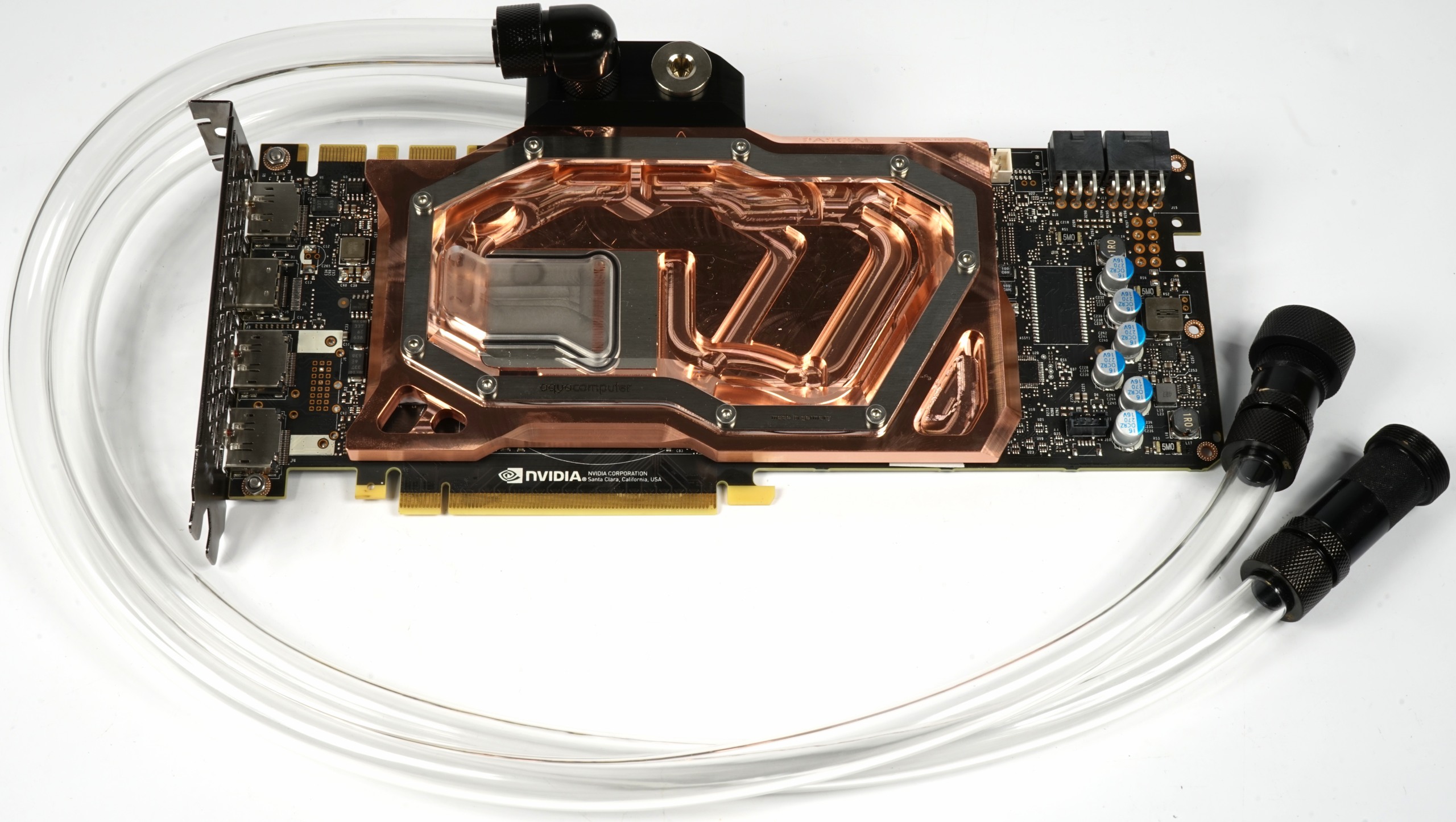
In any case, we are still glad to have paid attention to such an option when building the new test system. Hoses plugged in and connected, as well as some water refilled in the compensating tank – and that's it.
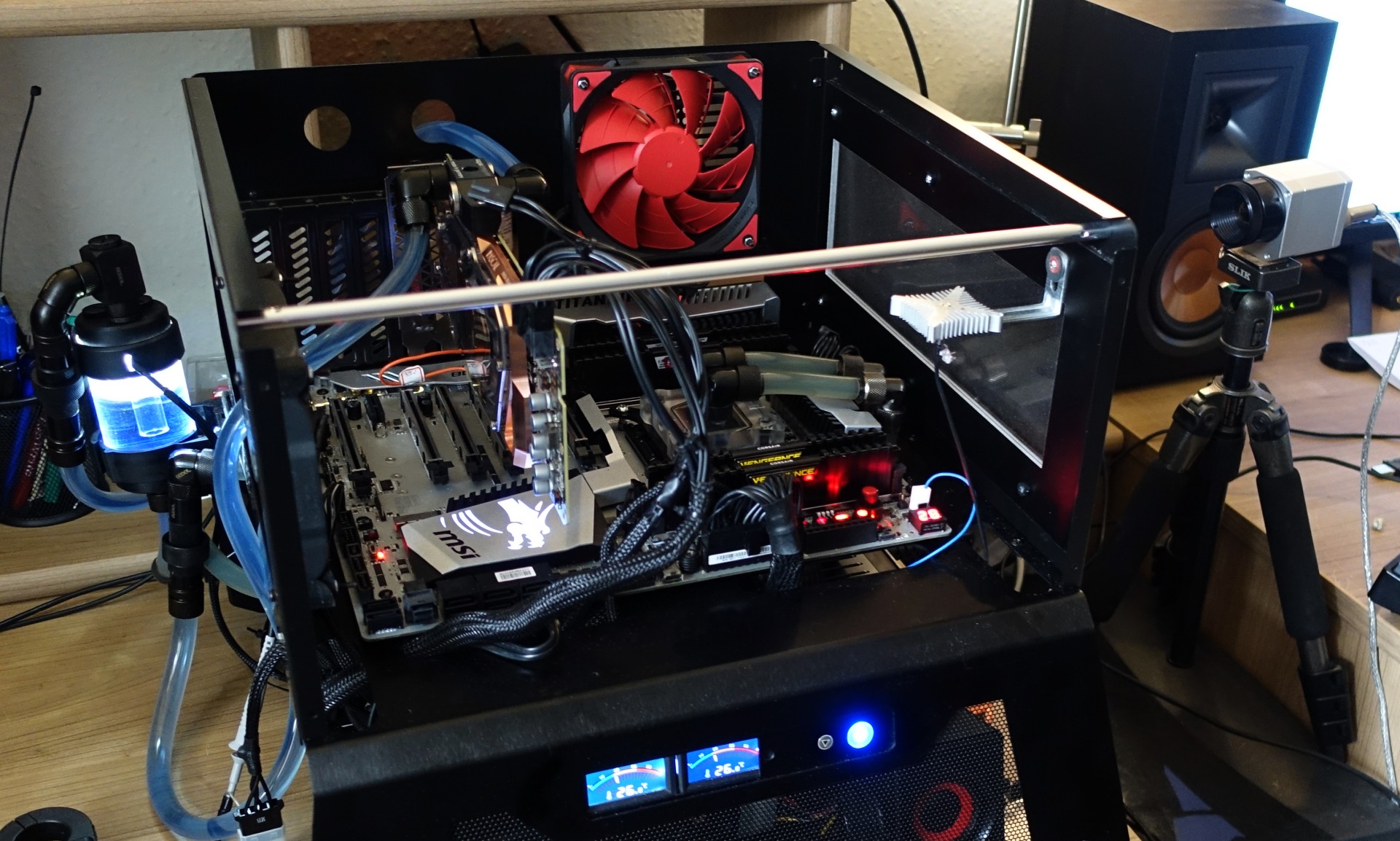
Before we start with the overclocking, the measurements and the evaluation, here again the test setup in the tabular overview:
| Basic system | |
|---|---|
| Hardware: |
Nvidia GeForce GTX 1080 Ti Founders Edition Intel Core i7-5930K -4.2GHz MSI X99S XPower Gaming Titanium Corsair Vengeance DDR4-3200 en 2400 MHz Be Quiet Dark Power Pro 11, 850-watt power supply Windows 10 Pro (all updates) |
| Storage: | 1x 1 TByte Toshiba OCZ RD400 (M.2, System SSD) 2x 960 GByte Toshiba OCZ TR150 (Storage, Images) |
| Watercooling: |
Aquacomputer kryographics Pascal NVIDIA TITAN X Alphacool Ice Pump VPP755 Alphacool NexXxoS UT60 Full Copper 360mm Alphacool Cape Corp Coolplex Pro 10 LT 5x Be Quiet Silent Wings 3 120mm PWM |
| Temperature: | Optris PI640 (high-resolution infrared camera) PiConnect measurement and evaluation software Digital sensors for water and air temperatures in the benchtable |
| Power consumption: | non-contact DC measurement on the PCIe slot (Riser-Card) non-contact DC measurement on the external PCIe power supply Direct voltage measurement on the respective feeders and on the power supply 2x Rohde & Schwarz HMO 3054, 500 MHz multi-channel oscillograph with memory function 4x Rohde & Schwarz HZO50, current togor adapter (1 mA to 30 A, 100 KHz, DC) 4x Rohde & Schwarz HZ355, touch divider (10:1, 500 MHz) 1x Rohde & Schwarz HMC 8012, digital multimeter with storage function |
| Housing: |
Lian Li PC-T70 with expansion kit and modifications |






























Kommentieren